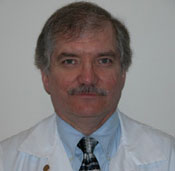Program Information
A Round Robin Dosimetry Intercomparison of Gamma Stereotactic Radiosurgery Calibration Protocols
R Drzymala1*, P Alvarez2 , G Bednarz3 , J Bourland4 , L DeWerd5 , L Ma6 , S Meltsner7 , G Neyman8 , J Novotny9 , P Petti10 , M Rivard11 , A Shiu12 , S Goetsch13 , (1) Washington University, Saint Louis, MO, (2) University of Texas MD Anderson Cancer Center, Houston, TX, (3) University of Pittsburgh Medical Center, Pittsburgh, PA, (4) Wake Forest University, Winston-salem, NC, (5) University of Wisconsin, Madison/ADCL, Madison, WI, (6) University of California San Francisco Comprehensive Cancer Center, San Francisco, CA, (7) Duke University Medical Center, Durham, NC, (8) The Cleveland Clinic Foundation, Beachwood, OH, (9) Hospital Na Homolce, Prague, Czech Republic,(10) Washington Hospital, Fremont, CA, (11) Tufts University School of Medicine, Boston, MA, (12) University of Southern California, Los Angeles, CA, (13) Dade Moeller Health Group, La Jolla, CA
Presentations
TU-G-BRD-4 (Tuesday, July 14, 2015) 4:30 PM - 6:00 PM Room: Ballroom D
Purpose: The purpose of this multi-institutional study was to compare two new gamma stereotactic radiosurgery (GSRS) dosimetry protocols to existing calibration methods. The ultimate goal was to guide AAPM Task Group 178 in recommending a standard GSRS dosimetry protocol.
Methods: Nine centers (ten GSRS units) participated in the study. Each institution made eight sets of dose rate measurements: six with two different ionization chambers in three different 160mm-diameter spherical phantoms (ABS plastic, Solid Water and liquid water), and two using the same ionization chambers with a custom in-air positioning jig. Absolute dose rates were calculated using a newly proposed formalism by the IAEA working group for small and non-standard radiation fields and with a new air-kerma based protocol. The new IAEA protocol requires an in-water ionization chamber calibration and uses previously reported Monte-Carlo generated factors to account for the material composition of the phantom, the type of ionization chamber, and the unique GSRS beam configuration. Results obtained with the new dose calibration protocols were compared to dose rates determined by the AAPM TG-21 and TG-51 protocols, with TG-21 considered as the standard.
Results: Averaged over all institutions, ionization chambers and phantoms, the mean dose rate determined with the new IAEA protocol relative to that determined with TG-21 in the ABS phantom was 1.000 with a standard deviation of 0.008. For TG-51, the average ratio was 0.991 with a standard deviation of 0.013, and for the new in-air formalism it was 1.008 with a standard deviation of 0.012.
Conclusion: Average results with both of the new protocols agreed with TG-21 to within one standard deviation. TG-51, which does not take into account the unique GSRS beam configuration or phantom material, was not expected to perform as well as the new protocols. The new IAEA protocol showed remarkably good agreement with TG-21.
Funding Support, Disclosures, and Conflict of Interest: Conflict of Interests: Paula Petti, Josef Novotny, Gennady Neyman and Steve Goetsch are consultants for Elekta Instrument A/B. Elekta Instrument AB, PTW Freiburg GmbH, Standard Imaging, Inc., and The Phantom Laboratory, Inc. loaned equipment for use in these experiments. The University of Wisconsin Accredited Dosimetry Calibration Laboratory provided calibration services.
Contact Email:


